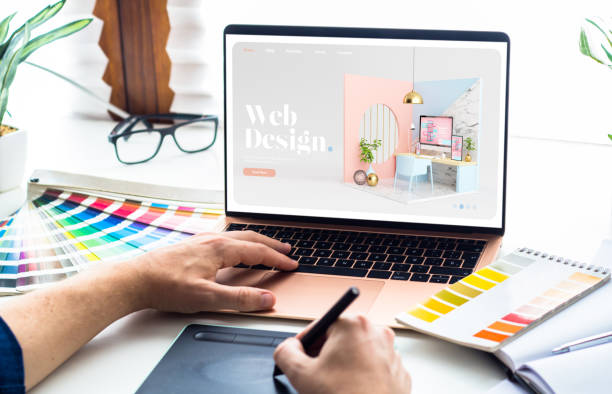Imaginative Web Style Solutions for Modern and Engaging Websites
In the realm of internet layout, the pursuit of contemporary and interesting services has actually come to be increasingly crucial for organizations aiming to catch customer focus. By integrating bold color design, interactive components, and responsive designs, developers can develop experiences that not just reverberate with users however likewise boost brand name identification. The strategic consolidation of multimedia material additionally improves these communications, cultivating a deeper connection with visitors - las vegas seo. The real difficulty lies in balancing imagination with performance-- an exploration that reveals several cutting-edge techniques worth considering.
Welcoming Strong Color Schemes
In website design, the tactical use vibrant color design can significantly boost individual engagement and brand name identity. By using lively shades, designers can develop visually striking internet sites that catch attention and cultivate an unforgettable experience. A well-chosen shade palette not just reflects a firm's values yet likewise stimulates certain emotions that can affect user habits.
Bold shades can be employed to assist users' focus to essential components such as calls to activity, enhancing conversion prices. Using contrasting colors for switches and links can make these aspects stand out, motivating users to engage even more readily. Moreover, a natural color design throughout the website reinforces brand name acknowledgment, creating a sense of experience and trust fund among visitors.
However, it is essential to balance strong shades with ample white space to avoid overwhelming individuals. Efficient use typography likewise matches strong shades, making certain readability while keeping aesthetic allure. Ultimately, embracing bold color design in website design not just raises visual high quality however likewise plays an indispensable duty in attaining critical organization purposes, making it a crucial factor to consider for modern-day internet advancement.

Utilizing Interactive Elements
Interactive components are necessary in contemporary website design, as they considerably boost individual interaction and create an extra dynamic browsing experience. By integrating functions such as animations, float results, and clickable components, internet sites can urge customers to check out material much more completely and return for future brows through.

Micro-interactions, such as refined computer animations when a button is clicked or a form is submitted, can additionally improve the individual experience by offering immediate responses. These little details can make the site feel even more responsive and alive, fostering a feeling of connection in between customers and the site.
Moreover, gamification elements, such as benefits for completing certain activities, can inspire customers to engage with the web content more deeply. By attentively incorporating these interactive elements, internet designers can produce a remarkable and appealing on-line experience that resonates with individuals and urges them to return.
Executing Receptive Layout
Executing receptive layout is essential in today's multi-device landscape, making certain that websites supply an optimum viewing experience across different display dimensions. As users progressively access the net via smartphones, tablets, and desktop computers, a one-size-fits-all strategy is no more practical. Receptive layout permits for seamless navigation and interaction, adapting design and material to fit the tool being made use of.
Key principles of responsive design include fluid grids, versatile pictures, and media questions. Liquid grids make use of loved one units, such as percentages, rather than repaired pixels, allowing aspects to resize proportionately. Versatile pictures scale within their consisting of aspects, stopping overflow and keeping aesthetic stability. Media inquiries assist in the application of different styles based on the device's characteristics, such as size, height, or resolution, allowing designers to customize the customer experience properly.
Furthermore, receptive style enhances SEO efficiency, as online search engine favor mobile-friendly sites. By applying receptive design, businesses not just enhance user contentment and involvement however also raise their reach in a competitive electronic landscape. As modern technology remains to evolve, taking on responsive layout has become an essential practice for any kind of contemporary and content interesting web site.
Integrating Multimedia Web Content
Multimedia content plays an essential function in developing appealing and vibrant web experiences that record users' focus and enhance understanding. By incorporating text, pictures, audio, and video, internet sites can provide a richer story that charms to numerous learning designs and choices. This combination not just bolsters individual involvement but likewise help in conveying complicated concepts succinctly.
Incorporating high-grade images and infographics can damage up textual web content, making it more digestible. Video clip tutorials and discussions can give in-depth insights that fixed web content might not fully communicate. Audio aspects, such as podcasts or history songs, can additionally boost the atmosphere of a site, producing a much more immersive experience.
In addition, the strategic use of multimedia can improve SEO performance, as online search engine favor diverse material types, enhancing exposure. It is critical to make certain that multimedia components do not prevent web page tons times, as this can lead to individual disappointment. By view website balancing multimedia integration with performance factors to consider, internet designers can create visually enticing and useful web sites that resonate with users, fostering a much deeper link and encouraging return check outs.
Prioritizing User Experience

To attain an optimum customer experience, developers should focus on several key concepts. Clear phone calls to action, readable typography, and arranged web content overview users, reducing cognitive lots.
Inevitably, prioritizing UX not just elevates customer satisfaction yet also drives interaction and conversion prices, making it a vital component of modern internet design techniques. By positioning users at the facility of layout efforts, web sites can develop long lasting, favorable impacts that encourage return Resources sees.
Conclusion
To conclude, modern-day internet design options that stress bold color plans, interactive components, receptive design, and multimedia content substantially boost user engagement and fulfillment. Focusing on customer experience via clear layouts and continuous comments additionally adds to boosted conversion prices. By adopting these strategies, sites can successfully mesmerize site visitors and enhance brand name identification, inevitably bring about a more vibrant and interesting online presence. The integration of these design concepts is essential for achieving modern website design purposes.